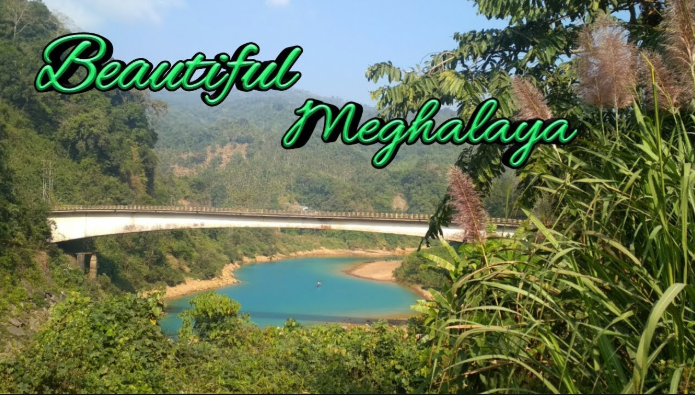In our previous article, we took a glance at the social and cultural, geographical and political aspects of Meghalaya. If you haven’t read that already, click here – Know your State ‘Meghalaya’ – Part 1. Now, here we will dive deep into other vital aspects of one of the most pulchritudinous states in Northeast India i.e., Meghalaya.
What are the economic aspects of Meghalaya? Where is the Monoliths of Nartiangs situated? In which part of India is the Spread Eagle fall located?
Meghalaya is one of the Seven Sisters States of North-eastern India. Meghalaya is considered as the wettest state in the country. The capital of Meghalaya, Shillong is known as Scotland of the East because it is a hill station and has rolling hills and narrow lanes that remind of Scotland.
Let’s study about the historical background of Meghalaya.
Table of Contents
HISTORY Meghalaya GK Notes:
Meghalaya has been known for its archaeological significance. People have lived in this region since the Neolithic age. The importance of Meghalaya is its possible role in human history through production of rice. India is the center of greatest diversity of domesticated rice with over 20,000 identified species and Northeast India is the most favorable single area of the origin of domesticated rice. The limited paleethnology done in the Meghalaya region suggests human settlement since ancient times.
- Only a flash is known of Meghalaya, the most important Khasi kingdom was a well-built kingdom in the chronicles of the neighboring regions Ahoms and Kacharis.
- The Khasi, Garo, and Jaintia tribes had their own kingdoms until most of the local rulers had submitted to the British By the mid-1830s.
- In the early 19th century, however, the British desire to build a road through the region to link Bengal and Assam led to a treaty (1827) with the ruler of the Khasi principality of Nonkhlaw.
- For the next century, the British exercised political control over the region called as the Garrows and Khasi States, but the tribes were able to preserve their traditional way of life in isolation.
- Before attaining full statehood, Meghalaya was given semi-autonomous status in 1970.
- Meghalaya was formed by carving out two districts from the state of Assam: the United Khasi Hills and Jaintia Hills and the Garo Hills.
- Meghalaya became a fully-fledged state on January 21, 1972. This date became an important landmark in the history of the State Meghalaya. The name of the sate means ‘The Abode of Clouds’ which was coined by Dr. S.K. Chatterjee and became the 21st State of India.
Now let’s jump to the next attribute of the state i.e. environment.
ENVIRONMENT Meghalaya GK Notes:
Meghalaya is the home of clouds and serves as the loveliest ecological hotspot. Meghalaya is one of the cleanest states of India. Nature is responsibly embraced by the locals who have kept the state in pure and serene condition. Meghalaya has been on the top of cleanliness quotient and the habitants of Meghalaya needed to be praised for such an achievement.
- Meghalaya is geographically termed the Shillong Plateau or the Meghalaya Plateau. The geography in Meghalaya is its rock formations which are the oldest.
- Meghalaya has many rivers. Most of these are rain-fed and seasonal. The important rivers in the Garo Hills region are Ganol, Daring, Sanda, Bandra, Bugai, Dareng, Simsang, Nitai and the Bhupai.
- The State of Meghalaya is endowed with large deposits of several valuable minerals such as coal, limestone, kaolin, clay, granite, glass-sand and uranium.
- Meghalaya is in the process of constructing dams on two rivers: the Mawphu dam across river Umiew and Myntdu dam across river Myntdu in East Khasi Hills and West Jaintia Hills districts discretely.
- There are two National Parks and two wildlife sanctuaries in Meghalaya namely Balpakram National Park, Nokrek Biosphere Reserve, Nongkhyllem Sanctuary, Siju Bird Sanctuary.
Let’s switch to the last aspect of Meghalaya i.e. economic aspect.
ECONOMY Meghalaya GK Notes:
Meghalaya is predominantly an agrarian economy. Agriculture and allied activities engage nearly two-thirds of the total workforce in Meghalaya. Agriculture in the state is characterized by low productivity and unsustainable farm practices. The important crops are potatoes, rice, maize, pineapples, bananas, papayas, spices, etc. . Communal land ownership is common, but jhum cultivation (shifting cultivation) has eroded the soil. The sillimanite deposits i.e. source of high-grade ceramic clay of the state are reputedly the best in the world and accounted for almost all of India’s sillimanite output.
GDP: ₹ 0.330 lakh crore
Rank: 26th
Per capita GDP: ₹364,941
Per capita GDP Rank: 28th
Let’s talk about the educational and sports status of Meghalaya.
EDUCATION Meghalaya GK Notes:
According to the data collected in the 2001 census, approximately 63.31% of the occupants of the state of Meghalaya are literate. In the sphere of education,the policy of free and compulsory education for all the children under the age group of 14 years has been espoused. Regular education in Meghalaya began when the Khasi alphabet was proposed in 1842 by the Welsh missionary Thomas Jones. For the Garo Hills area, the Garo alphabet was developed in 1902 by American missionaries. No strict rules required natives of the colonies to be well educated, so only a few primary schools were functioning at the colonial time. The first college was established in Shillong in 1924 by the Christian Brothers of Ireland.
SPORTS Meghalaya GK Notes:
Meghalaya has been a state that lives and breathes sports, especially football, since its inception in 1972 when it became a separate state from Assam. Archery locally known as Teer is a prominent sport of Meghalaya. Archery is one of the important parts of the culture of the Meghalaya local people.
Here are some more interesting facts about MEGHALAYA:
- Mawlynnong in Meghalaya is the cleanest village in India.
- Approximately 70% of the population in Meghalaya practices Christianity as their religion. The remaining 13% pursue Hinduism and 4% practice Islam.
- The tree root bridges of Cherrapunji, Meghalaya are made of roots of living trees. This resembles a suspension bridge.
- Krem lait prah cave is the longest natural cave in Jaintia hills. It is known for its enormous trunk passage, the aircraft hangar.
- Mysterious world cup insect found in Ri-Bhoi district of Meghalaya remain underground and come up only in four years, typically one month prior to the soccer world cup.
Therefore, these were all the chief necessitate facts about Meghalaya that will help in your preparation for competitive exams like SSC CGL, CDS, Civil Services and NDA etc.
In the next blog, we would be discussing some interesting facts and trivia about the state of Mizoram. Click here for Know your State – ‘Mizoram’.
Did you know that the seven states of Northeast India are called sister states? To find out interesting information about each of these states, click on the links given below.
Click on Know your State ‘Arunachal Pradesh’, Know your State ‘Assam’, Know your State ‘Nagaland’, Know your State ‘Manipur’, and Know your State ‘Tripura’
THANK YOU




